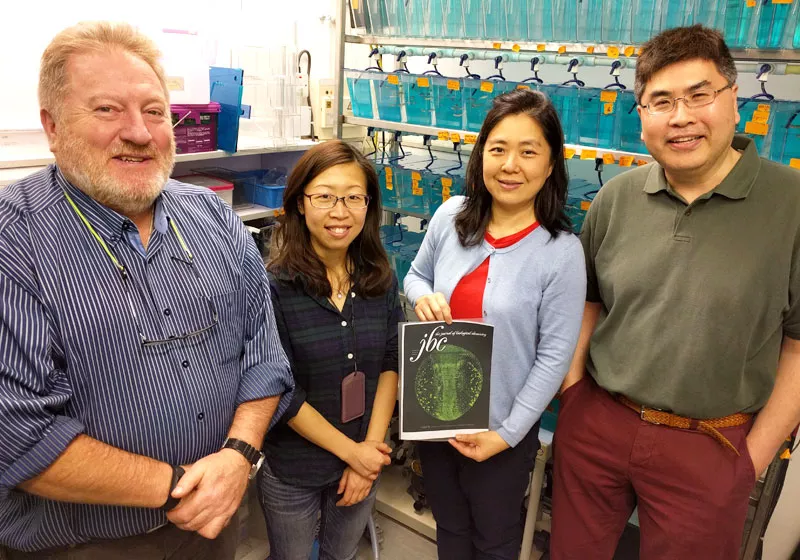Research Details how Molecular Sensors Can Manipulate Small RNA Levels

MicroRNAs, a class of small ribonucleic acid (RNA), have gained tremendous attention in cell biology in recent years due to their important role in regulating many functions of the cell across many species including humans.
Using zebrafish as a model, scientists at the University of Northern British Columbia and the Hong Kong University of Science and Technology (HKUST), have designed a molecular sensor named molecular beacon to detect a specific microRNA called miR-430 which is essential for zebrafish development and is evolutionarily conserved in many species including humans.
The molecular beacon is made of nucleic acids and is designed to target a specific microRNA.
Using powerful microscopes to image live zebrafish embryos, UNBC biochemistry researchers Dr. Maggie Wai Ming Li, Dr. Chow Lee and Dr. Andrew Miller from HKUST, were able to detect when miR-430 starts to appear and to follow it during the first 30 hours of the embryo.
During the study, the scientists also found the ability of the molecular beacon to inhibit the function of the miR-430 leading to developmental defects in the brain, kidney and heart. Compared with conventional microRNA inhibitors, the molecular beacon is 200 times more effective in inhibiting the function of miR-430.
That means the researchers were able to demonstrate that the molecular beacon can be used as a microRNA sensor as well as an inhibitor.
“As we are now beginning to understand many diseases are developed due to having too much or too little of certain types of microRNAs, finding effective ways to manipulate their quantities are important,” said Dr. Maggie Wai Ming Li.
They detailed their work in an article titled, Dual functional roles of molecular beacon as a microRNA detector and inhibitor, was published in The Journal of Biological Chemistry in early March and was selected for the cover page of the March 3 issue of the journal.
http://www.jbc.org/content/early/2017/01/18/jbc.M116.765776.abstract
The work took approximately three years to complete.
Pictured above are, from left: Dr. Andrew Miller, Ms. Ching-Man Chan, Dr. Maggie Wai Ming Li and Dr. Chow Lee.